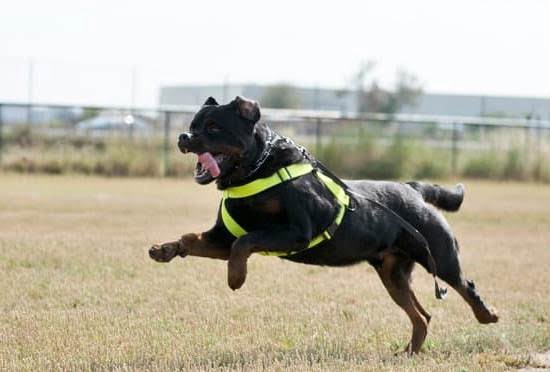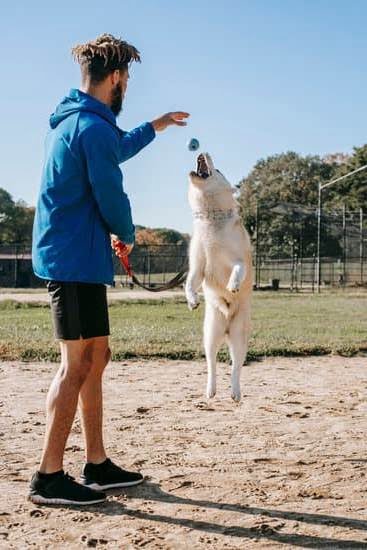Introduction
When we think of training animals, one of the first and most popular animals that comes to mind is dogs. They are considered to be one of the most trainable animals in the world due to their intuitive understanding of human instruction. Cats, on the other hand, are quite different; they have a reputation for being independent and aloof, making them appear untrainable. But can cats be trained just like dogs?
The short answer is yes. Although cats and dogs require different training methods in order to be successful, there is no real reason why cats can’t learn basic commands such as “sit”, “stay” or “come” – if you’re willing to put in some effort and commitment. Unlike dogs, cats are not social animals, so it’s important you understand how your cat learns best before attempting any kinds of training techniques with them. By doing this you can ensure they get the most out of each session and can stay motivated throughout the process.
For starters, it’s important to choose small goals and only move onto bigger goals once your cat has mastered the basics. As cats learn through positive reinforcement (such as praise or treats), make sure you reward your cat every time it successfully completes a task. Additionally, keep things interesting by changing up the rewards from time to time; offering different snacks and toys during each session will help keep your cat’s attention focused on learning new tasks instead of wandering off or losing interest quickly. Remember that training a cat takes patience and consistency; keep sessions short but frequent– around 10-15 minutes per day—while continuing to praise silently instead of offering verbal reprimands or corrections when mistakes happen so as not to discourage your cat altogether. Finally, never force your pet into any situation they aren’t comfortable with; it may take longer than anticipated but eventually they will open up themselves if they feel safe in their new environment
In conclusion although it might take more patience than initially expected, you certainly can train cats like you would a dog – just remember that every animal differs in temperament even within their own species so remain understanding while still maintaining specific rules and boundaries for both yourself and your pet
Understanding Your Cat’s Natural Behaviors
Training cats to behave more like dogs is possible, but it will require patience, consistency, and understanding of each cat’s individual personality. Cats are independent animals that thrive on routine and don’t typically like too much change. So, instead of trying to make them conform to pre-identified “dog-like” behaviors, find out what your cat naturally enjoys and train them around those areas.
For instance, providing your cat with regular playtime sessions can be incredibly beneficial in encouraging positive behaviors. You can use interactive toys or treats to keep them engaged and build a bond between you and your furry friend. Always use positive reinforcement rather than scolding when they display good behavior. It is also important to understand that cats may not necessarily need as much attention as dogs do since they tend to be more independent than other pets. If you provide an appropriate level of stimulation—instead of demanding their constant attention—your cat will feel comfortable being part of the family dynamic.
In addition, establish household rules from the beginning; for example, marking certain objects with positive messages so that cats recognize which items are off limits for scratching or chewing. Put deterrents in areas where your cats are not allowed to go so that they don’t get confused or discouraged; this teaches them boundaries without punishment. Understanding their natural behaviors is key when looking to train cats – after all they are very different from dogs!
Exploring the Benefits of Training Your Cat
Cats can indeed be trained like dogs, and many owners are finding the benefits of doing so. Training your cat offers a number of advantages that may surprise you. Not only can training strengthen the bond between you and your feline friend, but it can also provide mental stimulation and physical exercise for your beloved pet. Additionally, by teaching your cat basic behaviours such as using the litter box, coming when called or playing fetch with a toy, you can help instil in them good behaviour that will make living with them easier and more enjoyable for you both. Training cats can also reduce stress levels in both cats and their owners which is beneficial for everyone’s overall well-being. And finally, training cats can even help keep them safe since basic commands such as “no” or “come here” will give you more control over their environment.
Tips for Training Your Cat Effectively
1. Establish positive reinforcement – Positive reinforcement is the best method for training cats, and it’s important to reward your cat for good behavior with treats, scratches, or verbal praise.
2. Use a clicker – A clicker can help speed up the process of teaching your cat new behaviors and commands by providing an audible cue that you want them to pay attention to.
3. Be consistent – Cats learn faster with regularity, so stick to a routine when training and be as consistent as possible in terms of rewards and punishments.
4. Stay patient – Training cats takes more time then it does with dogs, so don’t get frustrated if they don’t pick up on a certain trick right away.
5. Exercise their body and mind – Mental stimulation is just as important as physical exercise, so give them plenty of toys and activities that will keep their brains sharp during the training process.
6. Make sure training sessions are fun – Cats learn best in fun environments where they’re rewarded for good behavior, so use games and play to keep things interesting for your feline friend!
Rewards and Motivation to Facilitate Feline Training
Yes, cats can be trained just like dogs; the key is understanding how cats think and what motivates them. When training cats, rewards and positive reinforcement, rather than reprimands and punishments, should be used; cats respond well to treats and verbal praise. Consistency is another important factor when training cats; it’s important that their owner repeats commands or offers rewards for acceptable behaviors as part of an ongoing learning process to help ensure the desired behavior is obtained. As far as goals go, it’s best to start small and gradually increase difficulty over time in order to keep cats challenged and maintain their interest. Finally, patience is essential when dealing with felines because they learn differently than canines—it may take longer for a cat to form the connection between the command given and reward obtained. With patience, consistency, suitable rewards and playtime, there’s no reason why cats can’t be trained just like dogs.
Identifying Safety Precautions to Keep in Mind When Training Your Cat
When training your cat, safety should always be the number one priority. Depending on the behavior you are attempting to train, it is important to consider any potential risks for both your cat and yourself.
Some general strategies that may be helpful to keep in mind when training your cat include starting with positive reinforcement tools such as clickers and treats. It is also important to make sure that your cat is feeling relaxed, alert, and comfortable before starting a training session. If your cat appears scared or stressed out by an activity or tool, take a break or try something else.
Also, pay close attention to your cat’s body language throughout the training session. When cats are happy or content they sometimes display behaviors such as purring and looking relaxed which can provide cues as to when they have really gotten something right. If your cat gets overwhelmed or overstimulated at any point during the training session, give them a break or focus on another behavior. Additionally, avoid yelling at your cat if they don’t do something correctly because this could make them less trusting of you and more fearful of the situations you place them in for training.
Finally, ensure that all of the tools used in the training process are safe for cats — many materials intended for use with dogs can be harmful for cats if used improperly.
Stimulating At-Home Training Activities and Games
Yes, you can train cats like dogs. A well-trained cat can be just as obedient as a well-trained dog. The key to stimulating at-home training activities and games is understanding how cats learn. Instead of using physical punishment as with dogs, cats are best trained from positive reinforcement — such as rewards like treats or affection in the form of petting or verbal praise. Exercises that involve problem solving, such as hiding a treat for your cat or teaching them how to use a scratch pad, can make for fun and educational activities that reinforce good behavior and increase the bond between you and your pet. Other activities like clicker training — where you pair positive reinforcement with sound cues — can also help your cat learn faster and associate desired behaviors with rewards. Whatever method you choose, remember that cats require much more patience than their canine cousins because they tend to become easily distracted; keep training sessions short but consistent in order to get results over time.
Investigating Clicker Training Methods and Techniques
Yes, cats can be trained like dogs using clicker training methods and techniques. Clicker training involves the use of a small handheld device, or “clicker”, that emits a distinct sound each time it is pressed. The sound serves as a marker to reward the animal for desired behaviours. When the clicker is paired with positive reinforcement such as treats, cats can quickly learn simple behaviours like targeting and sitting on cue. Clicker training is also useful in helping cats get accustomed to grooming, veterinarian visits, and travel. In addition, this method of teaching can be used to manage problem behaviour such as inappropriate scratching or meowing excessively. To achieve success when training cats with clickers, consistency is key; provide your cat with consistent rewards during each session to increase their motivation and keep them focused on learning new behaviors. If you follow the steps correctly and provide plenty of praise and rewards for good behaviour, you should be able to train your cat like a dog!
Looking Into Formal Training Options and Resources
Yes, it is possible to train cats like dogs. It may not be quite as straightforward as canine training, but cats can still learn simple commands and skills. Formal training options such as cat obedience classes are available in some areas, although their prevalence is limited compared to dog classes. Alternatively, owners can look into online resources that offer tips and guidance on how to train cats like dogs. At the very least, it’s possible for a cat owner to positively reinforce desirable behaviors with treats and vocal praise. Making sure to provide each pet consistently with ample enrichment activities, such as scratching posts and interactive toys, can also help ensure consistent behavior from cats.
Conclusion
The ability to train cats like dogs can be beneficial in some ways. Cats can learn basic behaviors, such as sit and stay, as well as more complex tricks. Training cats can help improve litter box hygiene and discourage bad lifestyles, like scratching furniture. It may also help bond with owners, providing an enjoyable and stimulating activity for both parties involved. On the other hand, cats are not always enthusiastic about training and have different learning styles than dogs. They may need more patience and require incentives to reinforce desired behaviors, making the process longer than what is needed for training a dog. In conclusion, while it is possible to train cats like dogs with enough dedication and commitment from owners, success is not guaranteed due to cats’ varying nature and different levels of motivation.

Welcome to the blog! I am a professional dog trainer and have been working with dogs for many years. In this blog, I will be discussing various topics related to dog training, including tips, tricks, and advice. I hope you find this information helpful and informative. Thanks for reading!





